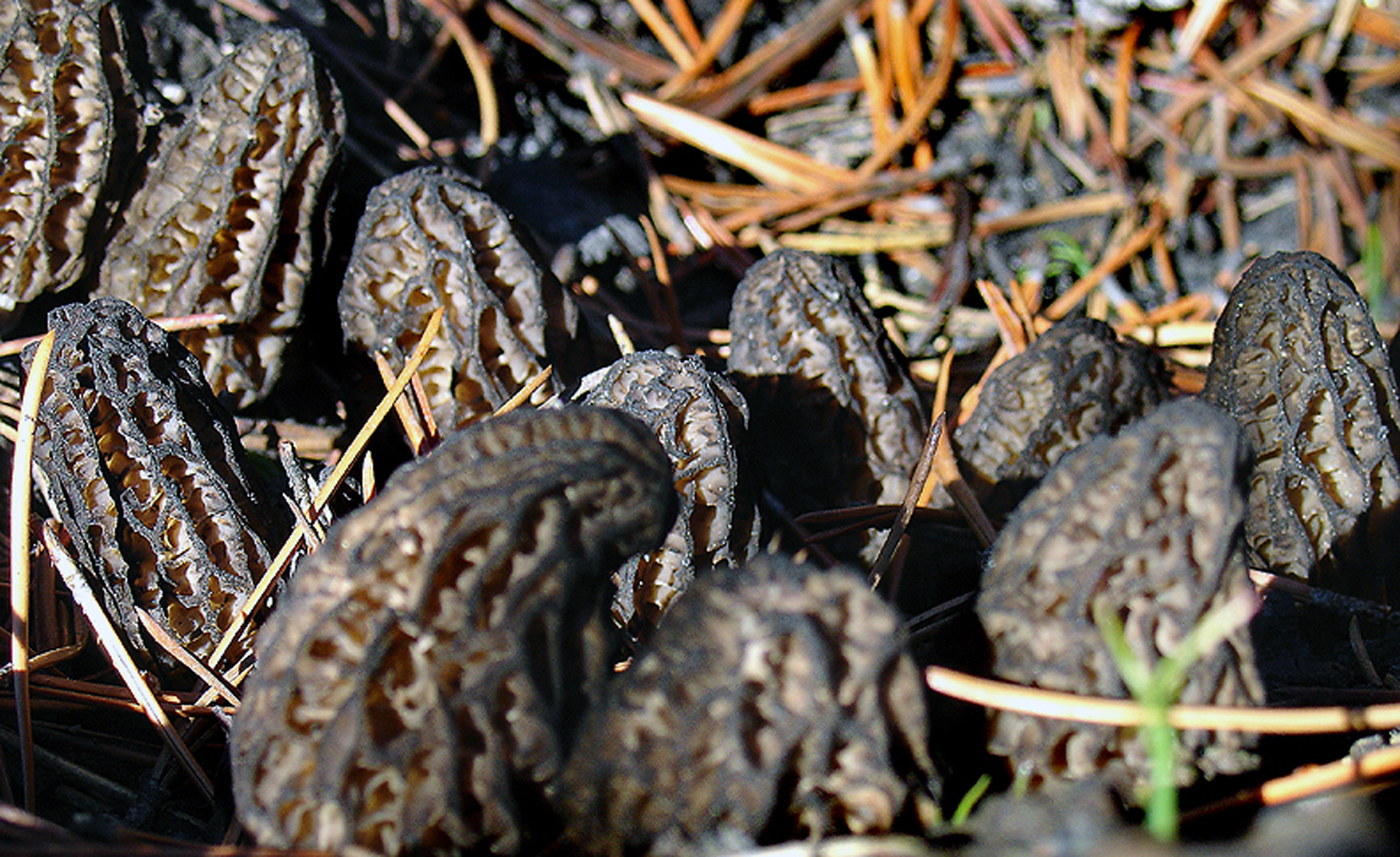Among the Fungi
Morel hunting and elk hunting have a lot in common. Namely “hunting.” Both pursuits take place in the mountains, in places that are typically inconvenient to access, require enormous effort, and can take a toll on body, spirit, clothing, relationships, and anything else of value. But we do it anyway.
We do it because both morel and meat hunting offer edible rewards of the highest quality if you succeed, and success depends on reading the landscape. It helps to not get lost, or run out of water, or get trampled by a moose. Even if you don’t succeed in bagging your prey, all you have to do is survive in order to experience some amazing moments, and walk away stronger.
Whatever your prey, you find it by finding its habitat. Elk tend to prefer being as far away as possible from where humans might be. The best morel habitat, meanwhile, is a burnt out forest, the year after the fire.
We don’t know how or why morels appear after a fire, where the spores come from, or how they survive the inferno if they were already there. Wilderness-dependent industries don’t attract much research money. Much of the knowledge of morel ecology is held by the pickers themselves, who are not always inclined to share what they know.
Like elk hunters, morel hunters will be loathe to share an information with their peers. Accurate information, anyway. When two pickers bump into each other in the woods it can be an awkward, mutually disappointing encounter. You both have the right to be there, but each nonetheless feels protective of their spot. Violence is not unheard of.
Unlike elk or deer, which can be raised in captivity, morels have stubbornly refused all efforts at domestication, and they live only where they choose. This means that every single morel you’ll ever eat was hunted and harvested by hand, in the wild. They have a rich, forestal flavor and can hold so much sauce in their nooks and crannies, and so easy to prepare, and so easy to store in perfect condition, morels are truly the wild mushroom of choice.
I’ve gone after those freaky fungal fruits, plodding up and down the burned mountainsides of Montana, Oregon, Washington, British Columbia and Alaska. Morel habitat is treacherous. Burnt trees called “widowmakers” stand in wait, propped up on neighboring trees and needing very little provocation to fall on your head, while the charred stumps of burnt saplings can poke through your boots. On a recent picking trip, one novel danger was the bark on downed lodgepole pines. It looked so grippy, and it was so tempting to step on it, either to get over an obstacle or to walk along the downed tree like a boardwalk. But weeks of rain had turned that bark into a banana peel, ready to slide out from under you as soon as you put weight on it.
That particular day was more of a guided hunt. A friend had been scouting this burn for a few weeks, waiting for the right combination of soil moisture and soil temperature to converge, and with it the morels. My buddy even drove, and didn’t make me wear a blindfold. But a guided hunt is still hunting. You still have to find your prey.
I wasn’t doing particularly well. Had maybe a quart when I ran into some pickers who were on the way out, loaded with fungus. They were friendly, but wary when I asked where they were from. Turns out they were Mexican and didn’t want any trouble. They were also tired, hungry and thirsty.
I had put down my backpack a few hundred yards below us, and was just carrying my bucket and my bear spray. I told them where my pack was, and invited them to help themselves to food and water. When I got back to my pack, an elk sandwich was gone. And my pail had an extra two gallons of morels.
I took them home and cooked them in sherry cream sauce, my go to way to cook them, and served alongside some whitetail steak, washed down with some red wine. It was the kind of meal that only a hunter gets to enjoy.
Morels in sherry cream sauce
If you don’t have, or can’t afford, a lot of morels, one trick is to add button mushrooms to the recipe. It will stretch out the morels without diluting the flavor. If you are using dried morels, toss a cup with ½ cup hot chicken broth, and let sit for an hour, covered, to re-hydrate before using.
2 cups fresh morels or one cup dried (see re-hydration instructions above)
2 tablespoons butter
½ medium yellow onion, minced
¼ cup dry sherry
zest and juice of one quarter lemon
A heavy pinch of nutmeg
1/4 – 1/2 cup heavy cream
Salt and pepper to taste
Melt the butter in a heavy bottom pan. Add onion and mushrooms. Cook together until onions are translucent and the morels give up their moisture—about 10 minutes.
Add sherry, and let it cook off. Add nutmeg, lemon zest and juice. Stir it around and cook a moment, then add the cream. Cook five more minutes, season with salt and pepper, and serve.
